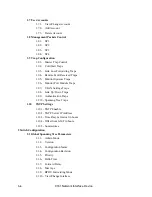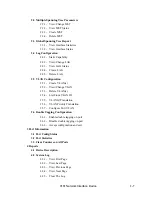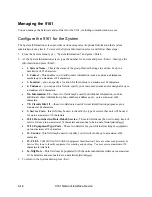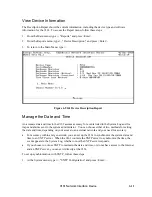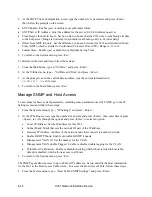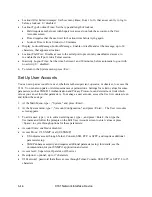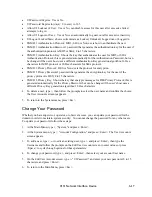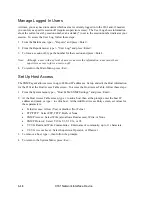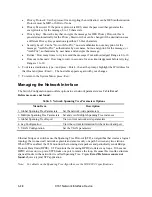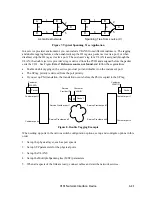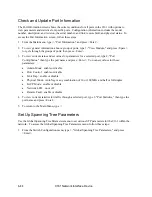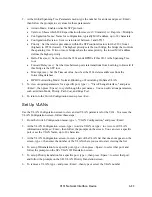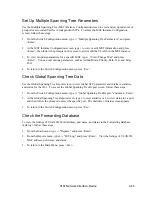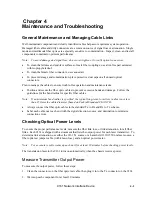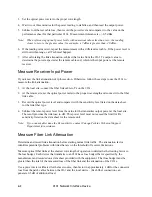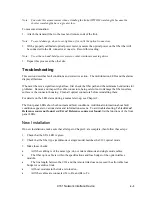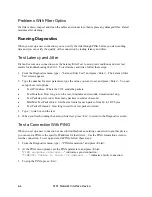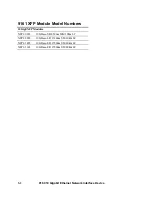
•
Privacy Protocol: Set the protocol for encrypting the notification; can be DES (authentication
Protocol must be MD5 or SHA) or None
•
Privacy Password: If the privacy protocol is DES, enter the password that generates the
encryption key for the message; 8 to 15 characters
•
Privacy Key: Shows the key that encrypts the message for DES Privacy Protocol; this is
generated automatically for the Privacy Password, but can be changed if the destination uses
a different Privacy Key generation algorithm; 16 Hex characters
•
Security Level: Can be "No Auth/No Priv," no user authentication or encryption for the
message; "Auth/No Priv," authenticates by user name, but no encryption for the message; or
"Auth/Priv," authenticates by user name and encrypts the message.
•
Retries: How many times to try to resend the message if not acknowledged; Range is 0 to 10
•
Timeout in Seconds: How long to wait, in seconds, for an acknowledgement before retrying;
Range is 1 to 30
6. To delete a destination, type
3
and press <Enter>, then at the prompt, highlight the IP Address for
that Host and press <Enter>. The host table appears again with your changes.
7. To return to the System Menu, press <Esc>.
Managing the Network Int
e
rface
The Switch Configuration menu offers options to set network parameters; see Table
Error!
Reference source not found.
.
Table 5. Network Spanning Tree Parameters Options
Menu Item
Description
1. Global Spanning Tree Parameters
Set the network-wide parameters
2. Multiple Spanning Tree Parameters Set and view Multiple Spanning Tree instances
3. Global Spanning Tree Report
View current network-wide parameters
4. Lag Configuration
View the current information for the network and port
5. VLAN Configuration
Set the VLAN parameters
Ethernet bridges or switches use the Spanning Tree Protocol (STP), an algorithm that creates a logical
topology that connects all network segments and ensures only one path between any two stations.
When STP is enabled, the 9161 monitors the incoming data packets and periodically sends Bridge
Protocol Data Units (BPDU). STP monitors the incoming BPDUs to detect any loops. If the same
BPDU arrives on two ports, STP blocks one port to remove the loop. Because this tree-like structure
spans all nodes in the network, it is called Spanning Tree. Figure
Error! Reference source not
found.
shows a typical STP application.
Note: For details on the Spanning Tree Algorithm, see the IEEE 802.1 specifications.
9161 Network Interface Device
3-20
Summary of Contents for 9161
Page 1: ...the 9161 Network Interface Device User Manual...
Page 2: ......
Page 4: ......
Page 6: ......
Page 10: ......
Page 41: ...9161 Network Interface Device 3 27 3 22 Blank...
Page 42: ......
Page 50: ......
Page 52: ......
Page 53: ......

